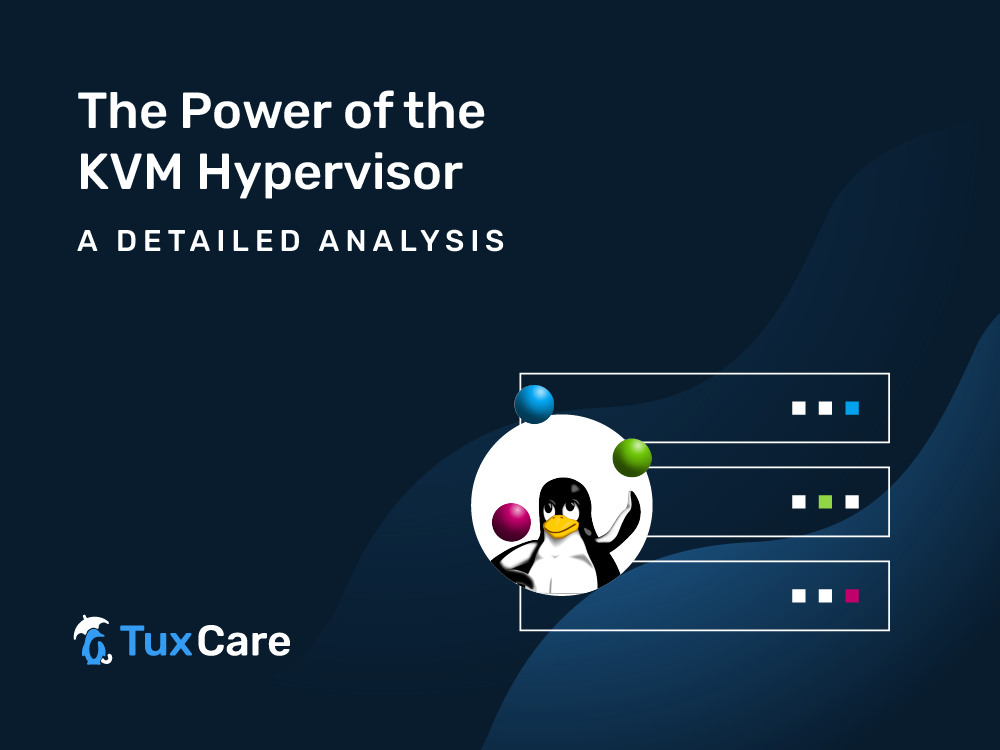The Power of the KVM Hypervisor: A Detailed Analysis
The need for virtualization is crucial in many corporate systems, as it offers significant savings in both financial and energy resources. Consequently, advancing in this area is becoming a key focus for organizations of all types and sizes. This blog post focuses on KVM, a key virtualization technology. In this post, we will explore the core aspects of the KVM hypervisor, from basic concepts to its advanced features – demonstrating why it’s a preferred choice in virtual computing.
What Is KVM?
The abbreviation KVM stands for kernel-based virtual machine. It is a virtualization module in the Linux kernel that allows the kernel to function as a hypervisor. This technology became necessary with the development of modern Intel and AMD processors. The new generation of processors supports hardware virtualization, and the KVM hypervisor was developed to take full advantage of this feature.
What is Hardware Virtualization?
To understand what hardware virtualization is, and the benefits it offers to the end-user, it’s helpful to look back at the early days of virtualization. Initially, virtual machines couldn’t directly use the host’s hardware, like CPUs. Instead, they simulated hardware functions. This method was less effective and led to reduced performance of the host system. The reason was that simulating hardware functions placed a substantial burden on the host during operations.
Now, modern CPU architecture has evolved to allow direct hardware access by virtual machines, enhancing virtualization efficiency.
KVM Hypervisor
A hypervisor is an intermediate software level between the guest operating system and the physical hardware of the server. There are two main types of hypervisors: those running directly on the hardware platform, not requiring a specially configured operating system, and those operating over a server’s operating system, requiring a server OS with corresponding capabilities. KVM turns the hardware equipment with the installed Linux OS into a first-type hypervisor, which provides higher efficiency and performance.
However, some operating system components are still required for correct operation, such as the I/O stack, memory manager, device drivers, task scheduler, network stack, security manager, etc. As the KVM hypervisor is part of the operating system, it has direct access to all these components.
The Benefits of the KVM Hypervisor
As KVM is part of the Linux operating system, and Linux is part of KVM, they can be considered one common system. Let’s look at the main advantages of implementing the KVM hypervisor in a corporate infrastructure:
- Efficient Memory Management: It uses techniques like ballooning, which dynamically adjusts memory allocation for virtual machines based on their needs, and memory overcommit, allowing more virtual memory allocation than the physical memory available, optimizing memory usage through methods like memory swapping and Kernel Same-page Merging (KSM).
- Flexibility in Storage: The KVM hypervisor supports a variety of storage types, including local disks, Network Attached Storage (NAS), and Storage Area Networks (SAN), providing organizations with the flexibility to choose the best storage solutions according to their needs and budget.
- Enhanced Security: KVM enhances security using sVirt in conjunction with SELinux, offering mandatory access control for virtual machines to isolate them and prevent unauthorized access, thereby enhancing overall virtual environment security.
- Dynamic Migration of Virtual Machines: The KVM hypervisor allows for the live migration of virtual machines between physical hosts without causing any service downtime, ensuring high availability and effective load balancing across servers.
- Effective Resource Control and Planning: Leveraging the Linux kernel, the KVM hypervisor ensures efficient management of computing resources, with Linux’s advanced scheduler optimally distributing resources among virtual machines, ensuring effective resource utilization.
- Scalability and Performance: Ideal for large-scale virtualization deployments like in data centers, the KVM hypervisor is highly scalable, capable of managing a large number of virtual machines efficiently, and provides high performance, even under significant loads – thanks to its hardware-assisted virtualization and efficient resource management.
KVM Management
To manage virtual machines in KVM, no additional software is strictly necessary for basic operations. These manipulations can be performed using command-line tools available within KVM’s own suite. However, in complex and large-scale environments, like those in large corporate networks, it’s common to employ additional third-party management tools, like Red Hat Virtualization, for more advanced management. This software facilitates enhanced interaction with both the basic physical equipment and the virtual environments.
KVM Hypervisor Patching
Maintaining KVM involves crucial patching processes to ensure its security and efficiency. As KVM is part of the Linux kernel, updates for it are typically delivered through standard Linux operating system updates. However, when it comes to patching a KVM hypervisor, the process usually requires a reboot or migrating your virtual machine to another running hypervisor. This may cause service disruptions that affect your end-users.
In environments where uptime is critical, solutions like QEMUCare boost KVM benefits by providing live patching for QEMU/KVM environments and enabling the application of important updates without needing to reboot or migrate your virtual machines.
Disadvantages of KVM Virtualization
KVM hypervisor technology, like any software solution, has certain drawbacks. Fortunately, these are not numerous and usually don’t pose significant issues. The main disadvantages include:
- Complexity in Use: Setting up and managing a KVM environment requires some technical know-how, particularly with the Linux operating system’s terminal. While KVM is equipped with default settings that work well for most users, understanding and customizing these settings for specific tasks can be challenging without the requisite technical skills.
- Relative Youth: KVM is newer compared to long-established technologies like Xen. This relative newness may lead to occasional challenges with driver support and the compatibility of KVM with different software and hardware configurations.
Parting Thoughts
The KVM hypervisor, a part of the Linux kernel since 2007, has evolved into a robust open-source technology that enhances virtualization efficiency. Its development over the years has led to widespread adoption among cloud computing providers and data center owners.
This overview addresses why the KVM hypervisor is beneficial and delves into its core principles. KVM significantly improves the flexibility and scalability of a company’s IT infrastructure. Implementing KVM is a relatively straightforward process. While it offers greater control over virtualization and can reduce dependence on external cloud providers, the degree of independence achieved depends on the specific IT infrastructure and cloud integration. KVM allows businesses more direct access to low-level server settings, enabling more flexible and tailored management of their infrastructure.



 Documentation
Documentation Login
Login




